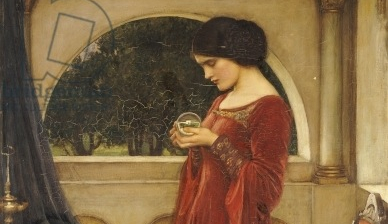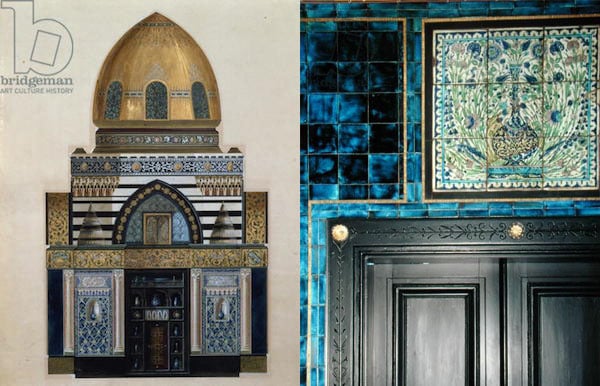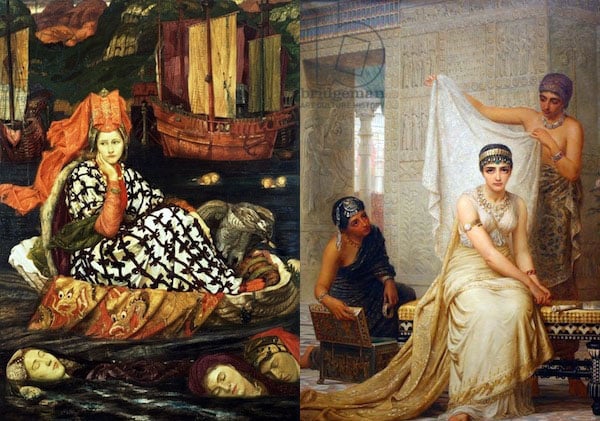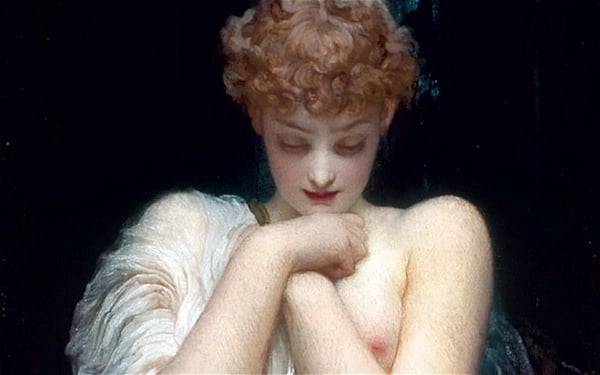
Leighton House Museum: A Victorian Obsession
A seductive antidote to the hustle and bustle of modern life, Leighton House beckons visitors to conceive of a different world view, where the adoration of beauty is paramount and time is purely a concept to be played with.
President of the Royal Academy, Frederic, Lord Leighton travelled widely and was heavily influenced by the orient – a trait typical among his contemporaries. Back in the day, Leighton’s dinner parties must have been irresistible, for the great and the good of the art world flocked to dine with him. His residence embodies a deep sense of irony or perhaps a simple romantic nonchalance of art for art’s sake.
The magnificent centrepiece of the building, the Arab Hall, was built to display his collection of 16th and 17th century Islamic tiles. Seldom does one see depictions of the human form occupy the same space as Islamic art, which has always tended towards the abstract or the decorative, shying away from images of any living being. Yet in this house some of the finest depictions of youthful, radiant flesh have been created and are now hanging.

Design for the Arab Hall at Leighton House, 1880 by George Aitchison / Bridgeman Images.; Doorway, Narcissus Hall by George Aitchison / Bridgeman Images.
Once could scarcely find a better setting to show off the 52 paintings included in A Victorian Obsession – a tribute to female beauty which forms part of the largest private collection of Victorian and Edwardian art outside Britain – on tour thanks to Mexican businessman and inveterate collector Juan Antonio Perez Simon.
Most of the famous names have a look in – Rosetti, Burne-Jones, Waterhouse and Millais – referencing their customary literature, myth and legend. While their pieces are undoubtedly sublime and the exhibition would seem incomplete without them, it is the diversity of the collection which makes it a must-see. The Enchanted Sea by Henry Arthur Payne is full of Pre-Raphaelite Symbolism and echoes his training with stained glass in its wonderful rich colours. John Melhuish Strudwick poetically considers the passing of time in his allegorical Passing Days.

The Enchanted Sea, 1899 by Henry Arthur Payne © The Perez Simon Collection / Studio Sebert Photographes; Queen Esther with Attendants, 1878 by Edwin Long / Bridgeman Images
As visitors then ascend the sweeping staircase, the mood turns towards the exotic with a grouping of paintings referencing the Mediterranean and Middle East. Edwin Long’s Queen Esther enthrals the viewer with her anxious yet courageous gaze as she prepares to plead with her husband for the Jews of Babylon to be spared. While the long flowing fabrics and Egyptian wall carvings are well executed, it is the overt depth of character which sets this image apart from those hanging nearby, where the feminine charm has greater purpose than being a mere object for contemplation.
William Clarke Wontner’s sensual The Saz Player plays up to the orientalist cliché of the harem, in stark contrast to the archaeological accuracy favoured by the older Frederick Goodall in his The Finding of Moses. Yet even Goodall flouts his self-imposed authenticity by painting the Pharoah’s daughter with the palest of skin.

Crenaia, the Nymph of the Dargle, 1880 by Frederic Leighton © The Perez Simon Collection / Studio Sebert Photographes
Leighton’s sensual Crenaia, the Nymph of the Dargle, encapsulates that which he does best – naturalistic forms, flawless tones, diaphanous veils and a gentle dose of serenity. Although thirty years younger than Leighton, John William Godward is perhaps the closest to him in style, with his skilful treatment of fabric in Absence Makes the Heart Grow Fonder. Godward also echoes the inclination towards the Mediterranean of Lawrence Alma-Tadema, who is well represented in the collection.
An acquired taste, Alma-Tadema’s works cover scenes of everyday life in ancient Greece and Italy. The artist veers away from any soft, romantic approach and pays considerably more attention to props, stone, historical interpretation and, later on, light. An element of grittiness runs through many of his pieces, reflected in both his brushstrokes and his narrative.
There is no doubting the impressive scale of The Roses of Heliogabalus – the grand finale of the exhibition. More than two metres wide, this ambitious painting is set in its own room with a heady scent of roses thanks to Jo Malone diffusers. Into his composition, Alma-Tadema copied photographs of real-life objects, some of which are displayed on an adjacent wall.
While visitors may choose to linger and contemplate this colourful and iconic scene, the more subtle call of Leighton’s smaller works may win out for others – especially as it’s the first time they have returned to the house since their creation in its vast studio. Fans of Victorian art will surely agree it’s a very welcome homecoming, even if all too brief.
A Victorian Obsession runs until 29th March 2015.

